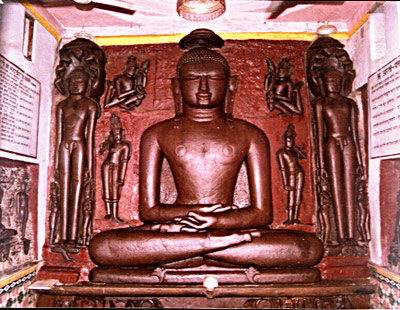Damoh is a city situated in the Sagar Division in the northeastern part of the state of Madhya Pradesh in central India. The city is closely associated with Raja Nul and Rani Damyanti. It is the administrative headquarters of the Damoh District.
 The exact geographical location of the city is at 21.88° N and 80.78° E. It has an average elevation of 595 meters (1952 feet).
The exact geographical location of the city is at 21.88° N and 80.78° E. It has an average elevation of 595 meters (1952 feet).
The census records of 2001 reveals that the population of Damoh is 112,160. There are 53% males, 47% females and 14% children less than 6 years of age. The average literacy rate is 73%, which is greater than the national average of 59.5%. While the male literacy is 79%, 66% of the females are literate.
The town has a large cattle-market, and a number of small industries, namely weaving, dyeing and pottery-making. A sowing machine known as Tipan was manufactured by Agro Industries located in Damoh. Many rulers ruled the town along with the entire district. Chronologically these rulers are the Mauryas, the Guptas, the Rajputs, the Muslims and the Gonds, the Bundelas and the Marathas and finally the British before independence.
The town has a small fort of Rani Durgawati. The Shri Digambar Jain Siddha Kshetra Kundalgiri is a tourist spot situated at a distance of 38 kms from Damoh. This place is famous for a mammoth 15 feet statue of Bade Baba Bhagwan Adinath in the sitting posture. This is a unique piece of art in the whole world. Buses are available from Damoh to this place. Some other notable tourist spots are also located in the vicinity of the city. The national highway no - 12A passes through Damoh.



















